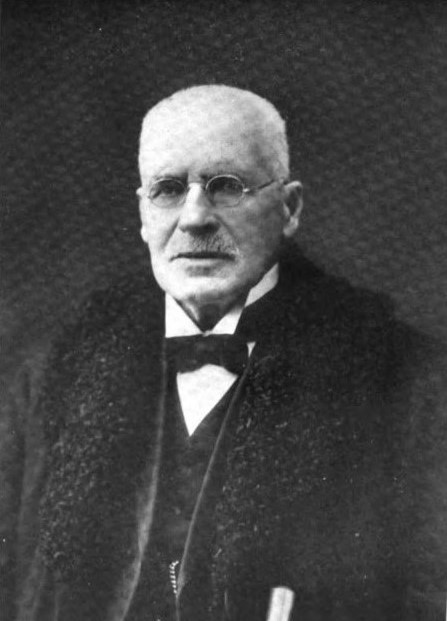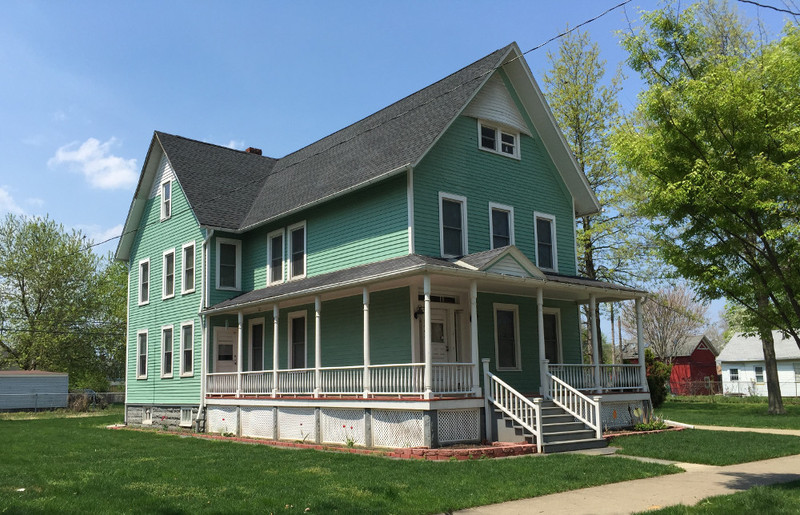Admiral Kidd's Neighborhood
West 50th Street from Bridge to Franklin

Some say that Admiral Isaac Campbell Kidd, the highest-ranking officer to die at Pearl Harbor on December 7, 1941, decided to make a career of the Navy because his Irish ancestors hailed from County Wexford, a place on the southeast coast of Ireland well-known for its maritime activities. And that may be true. But a young boy is just as often influenced by the neighborhood in which he grows up, and the Cleveland neighborhood in which Isaac Campbell Kidd grew up--Birch Street (today, West 50th) from Bridge Street to Franklin Avenue, was populated by a number of men, women and families whose work on or near the Great Lakes might well have inspired a boy in his youth to turn his attention and ambitions to the sea.
Kidd's neighborhood was part of two residential subdivisions, the larger of which--the Alottment of Benedict and Root, platted in 1852, in the waning days of Ohio City when that city was still Cleveland's rival on the west bank of the Cuyahoga River. Together with the smaller Dudley Baldwin Subdivision, which was platted in 1863, but then revised in 1869 when Franklin Avenue was realigned to run parallel with Detroit Street, the land which came under development before the onset of the Civil War consisted of more than one hundred acres, covering the area south of Franklin Avenue to Lorain Street, and west of Harbor (West 44th) Street all the way to Courtland (West 54th) Street.
Originally, it was expected that the land would be developed by nineteenth century Cleveland real estate mogul Silas Stone, who developed the large residential subdivision north of Detroit Street, from Taylor (West 45th) Street to Oakland (West 58th) Street. However, Stone defaulted on his contract with Peter Wedell, the land owner, and after Wedell died in 1847, his widow Eliza sued Stone in Superior Court, a local court of equity, seeking relief. Stone was found liable to the widow, and the land in question was sold at public auction in 1849 to Cleveland banker Dudley Baldwin, Wedell's Administrator.
After receiving title, Baldwin turned around and sold approximately eighty-percent of the land to George Benedict, later editor of the Cleveland Herald, but at the time Clerk of the Superior Court, and Elias Root, a Cleveland businessman who was also serving as Sheriff of Cuyahoga County, the office charged with the duty of conducting land sales at public auctions. Despite these irregularities, Baldwin, Benedict and Root, successfully laid out the streets for this new residential area of what was by this time the west side of Cleveland, and sales of lots in the Benedict and Root subdivision, which was developed first, were soon underway in early 1853.
From the start, the two subdivisions attracted many in Cleveland who made their living on or near the Great Lakes. In the 1860 census, of the 18 families living on the block of Birch Street where Kidd would later live, six were headed either by vessel captains, sailors or ship carpenters. By 1880, when there were 42 families living on the block, six families were headed by vessel captains and three by ship carpenters or ship builders. Many of the other families on the block were also headed by men who worked in Cleveland's then burgeoning transportation industry, doing such varied jobs as baggage masters, railroad brakemen, switchmen, street car conductors, and travel agents.
This was the neighborhood into which the Kidd family moved in 1888. And, just five years later, when Isaac Kidd, Jr., was 9 years old, another vessel captain, Charles Miner moved in next door to the Kidds at 107 Birch (1832 W 50th). Miner, recently retired and the father-in-law of Isaac's aunt Minnie--who also lived on the block, no doubt enjoyed spending some time in his last years--he died in 1901, reveling the young Kidd boys with stories of his travels and experiences on the Great Lakes. While Admiral Kidd's own sudden and tragic death in 1941 foreclosed the possibility of him writing his memoirs and crediting growing up on West 50th Street, between Bridge and Franklin, for some role in his career choice, clearly growing up on such a block placed him in close contact with people who would have talked about what life, and life's work, was like on the water.
With the passage now of more than one hundred years since Admiral Kidd left that neighborhood to attend the Naval Academy, many changes have come to West 50th Street between Bridge and Franklin. The street is now paved with asphalt instead of gravel or brick as it was in Kidd's day. The neighborhood's tree population is engaged in a battle with the emerald ash borer, instead of the Tussock moth or Dutch elm disease that earlier-generation trees on the street battled in the first half of the twentieth century. The ethnic population is no longer primarily of English, Irish and German mix as it was in Kidd's day, but is now instead a more diverse mix of whites, African-Americans and Latinos.
And the housing stock on the block for at least the last two decades has been undergoing tear-downs and new construction that is very different from the tear-downs and new construction that Kidd witnessed on the street in the decade of the 1890s. In the process of this most recent rebuilding of West 50th Street, Admiral Kidd's boyhood home at No. 1830 was lost. But there remain many historic houses on West 50th, some that date back to the very beginning of the neighborhood in the 1850s, and some which were the homes of people who undoubtedly played an important role in the career choice of one of Cleveland's greatest and most tragic war heroes. In fact so much still remains on West 50th Street from the time when Isaac Kidd walked the block, that were he here today, he might well gaze down the street from its intersection with Franklin Boulevard, and say, "This is where I grew up. This is my neighborhood."
Images











